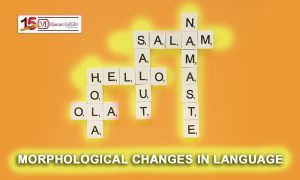|
Getting your Trinity Audio player ready...
|
Language is ever-evolving alongside humans, one key contributor being its morphological transformations. Morphology refers to the study of word structure and formation patterns, including how words use meaning at their foundation – with each unit of meaning within language called morphemes being considered an individual unit in morphological analysis.
EDITING THE WRITTEN TEXT IN TERMS OF MORPHOLOGY
As writers, understanding morphology is vitally important to create clear, concise, and easily comprehended texts by our audiences. Let us look into its importance, different types of morphology, and teaching it effectively.
The significance of morphology in written language cannot be overstated, particularly in research publications. Morphological errors have the potential to introduce confusion and impact the clarity and meaning of a text. For instance, consider a research paper discussing the effects of environmental factors on plant growth. An incorrect use of morphology in a sentence describing the experiment could lead to ambiguity.
EXAMPLE SENTENCE
Original sentence: “The result of the experiment shows a significant increase in plants’ growth.”
Improved sentence: “The experiment results show a significant increase in plant growth.”
In the original sentence, using the plural possessive form “plants” concerning growth introduces a morphological error that can confuse. By editing for morphology, the error is rectified, and the improved sentence conveys the intended meaning clearly and accurately.
TYPES AND EXAMPLES
Morphology is paramount in scientific research articles, as it impacts the accuracy and clarity of findings. For example, when studying enzyme activity, inflectional morphology clarifies the relationship between temperature and increased enzyme activity. Derivational morphology allows for new terms, such as transforming “antibiotic” into “antibacterial,” to indicate specificity. Compounding combines words to describe complex concepts like “ocean acidification.” Reduplication emphasizes characteristics like “chirp-chirp” for repetitive bird calls. Conversion transitions words between noun and verb forms, such as “seed” becoming “to seed.” While less common, suppletion clarifies comparisons like “elephant” being “larger than” a mouse. These morphological aspects enhance scientific language, promoting accuracy and effective communication in research articles.
TEACHING MORPHOLOGY
Teaching morphology to students is vital in language learning, enabling them to enhance their writing skills and become effective communicators. Scientific examples can be used to teach morphology, fostering a deeper understanding of word formation. For instance, examining the word “photosynthesis” breaks down into its morphemes “photo” (light) and “synthesis” (the process of combining), elucidating its scientific meaning. Another approach is exploring word families in scientific contexts. Students can begin exploring scientific terms by learning basic words such as “magnet” and their derivatives (“magnetic,” “magnetism,” and “magnetize”) that illustrate their interconnection.
Morphology plays an essential part in language acquisition and writing development. Editing for morphology ensures that written text is clear and easy to understand while understanding the different types of morphology can help students improve their writing skills. To improve your language morphology and get an easy publication, kindly visit https://www.manuscriptedit.com/
Dr. Soumya Prakash B




